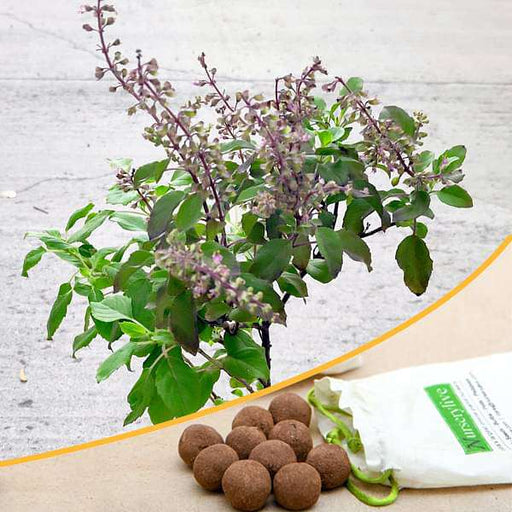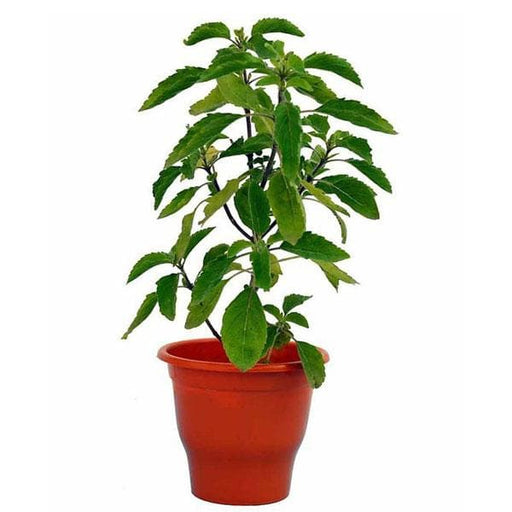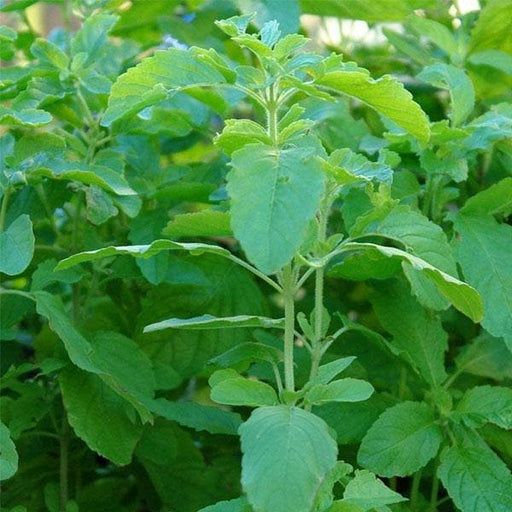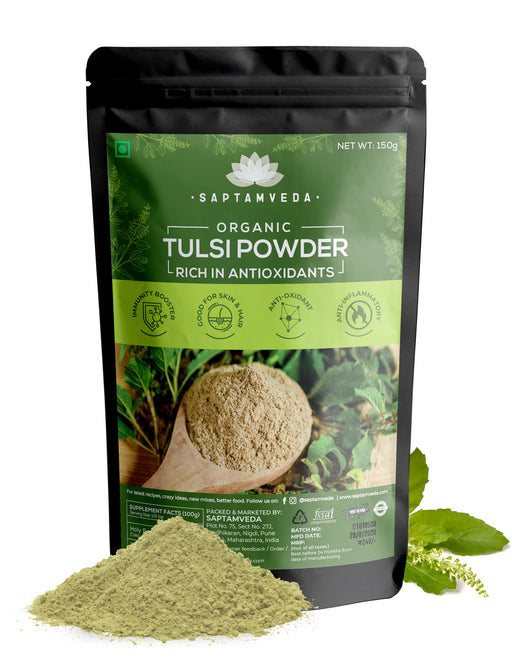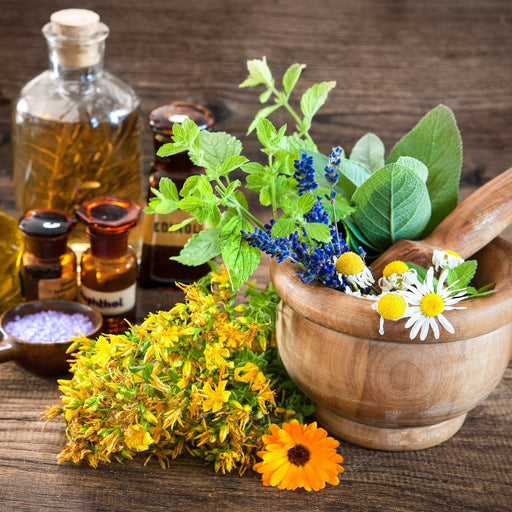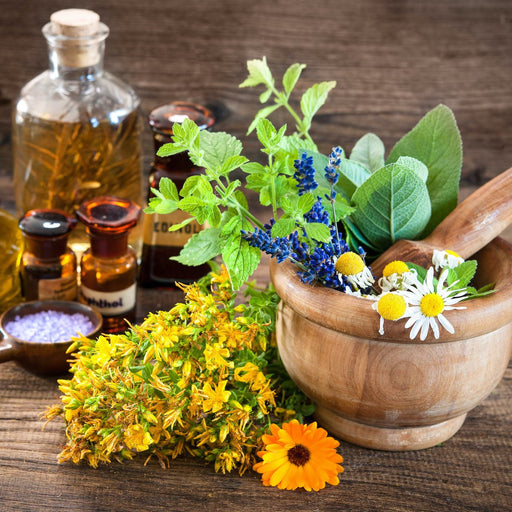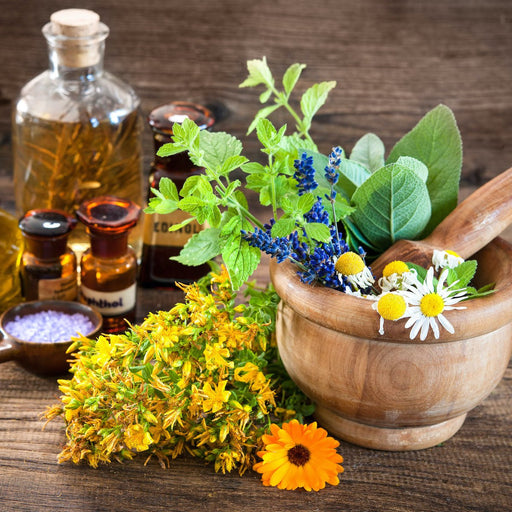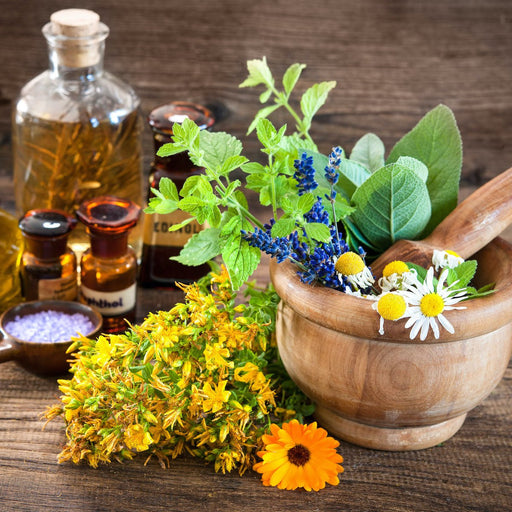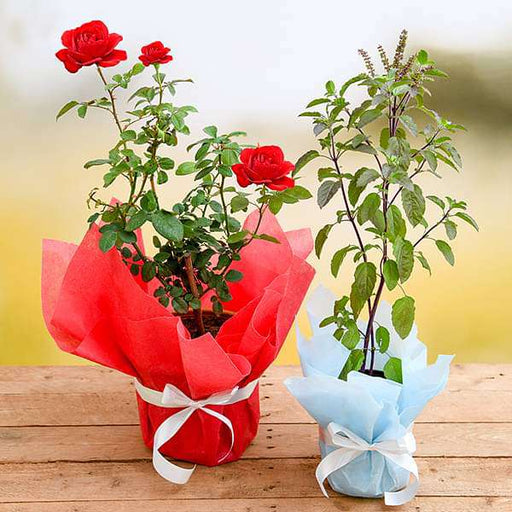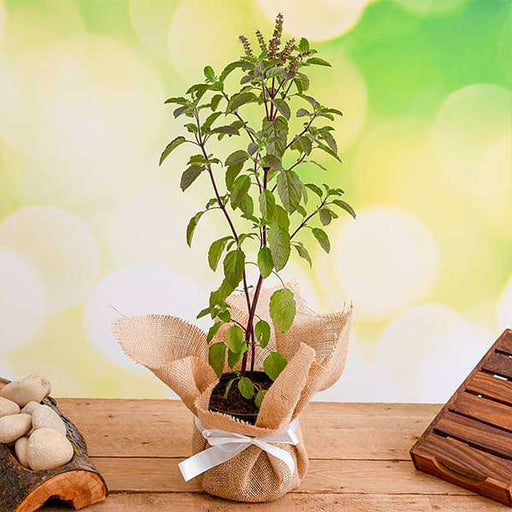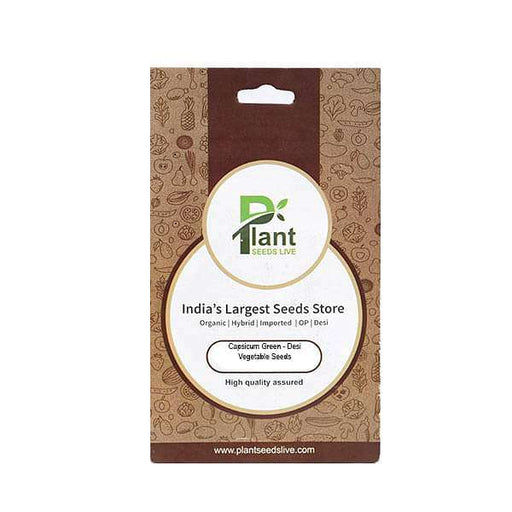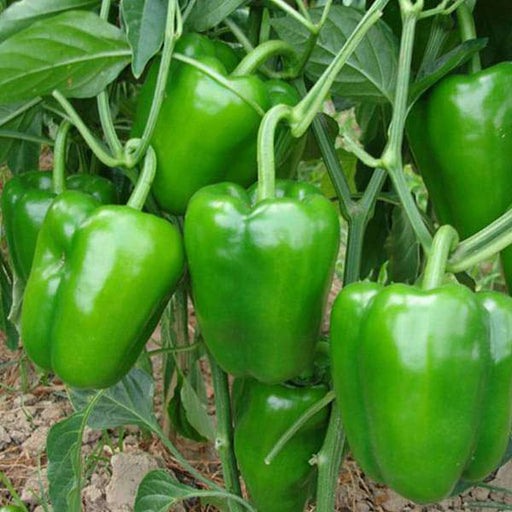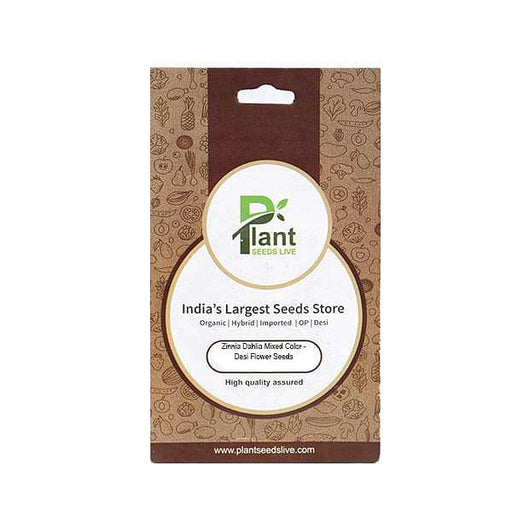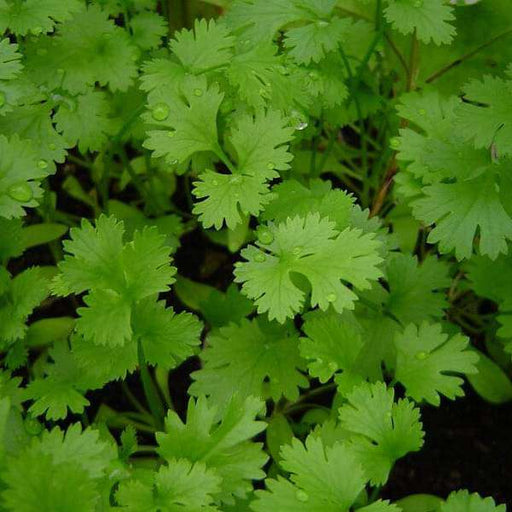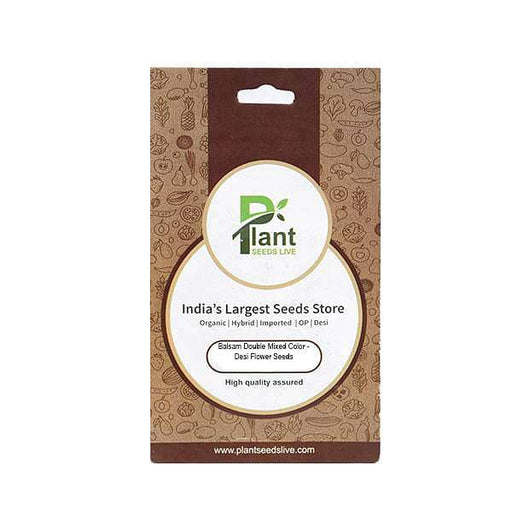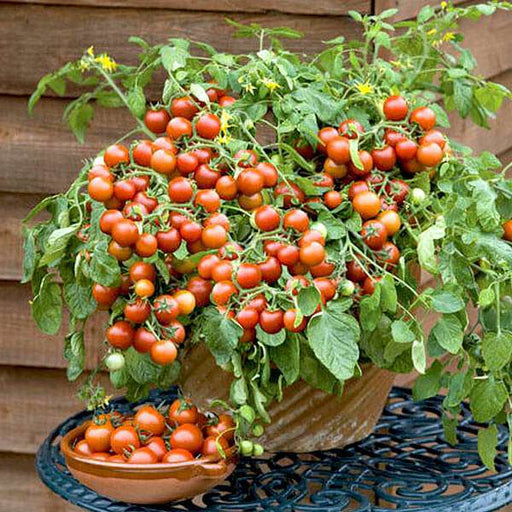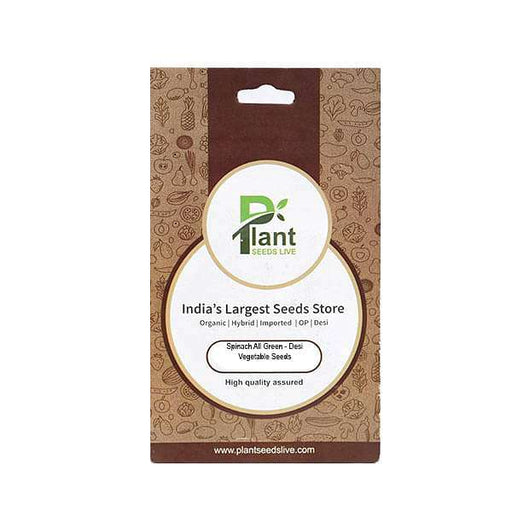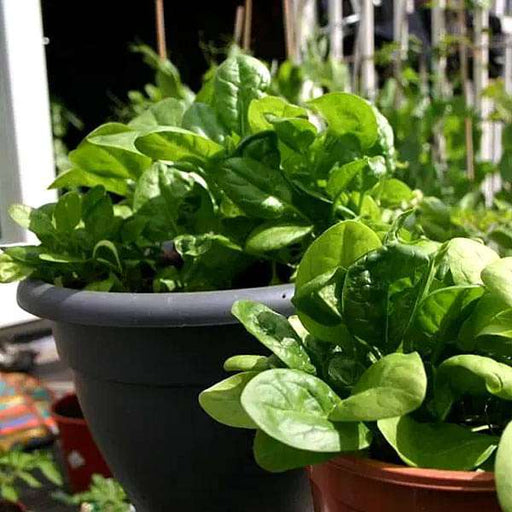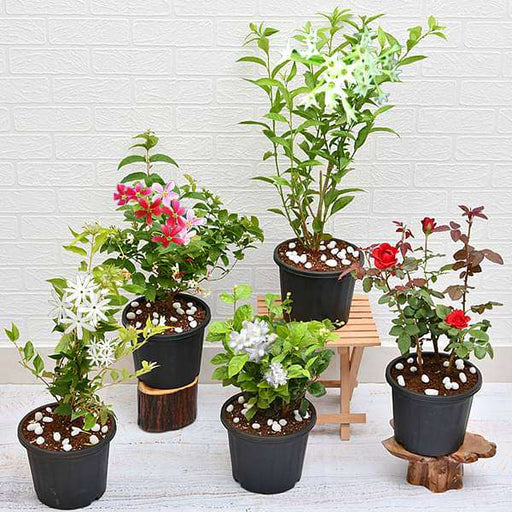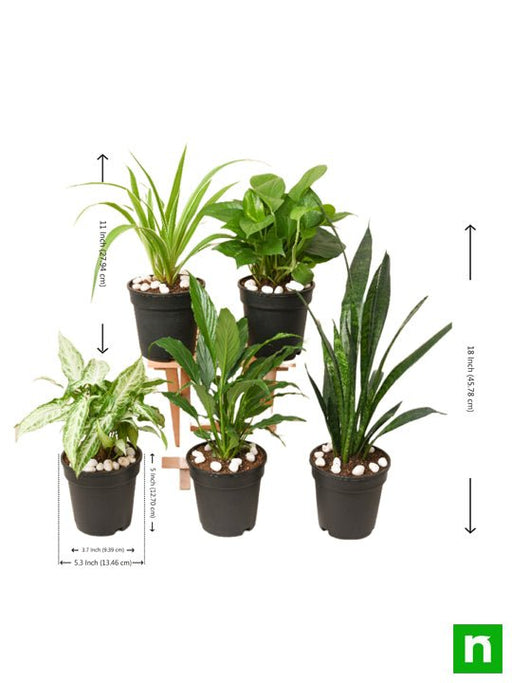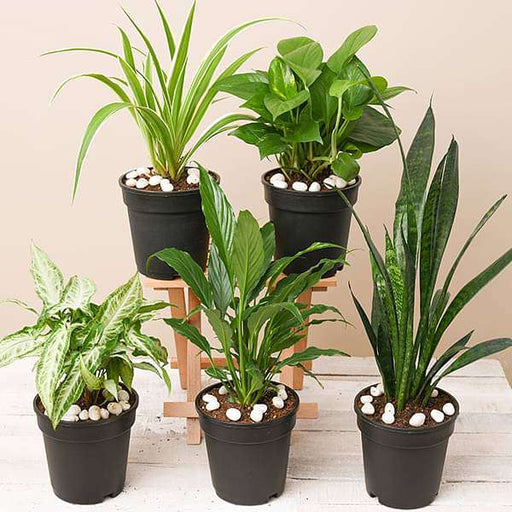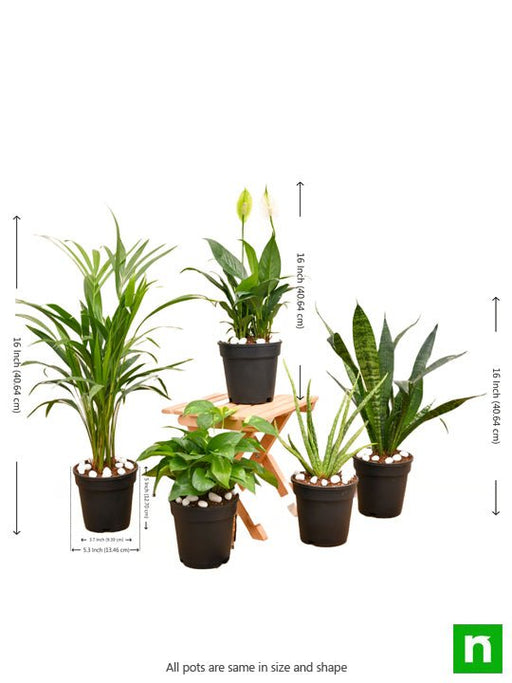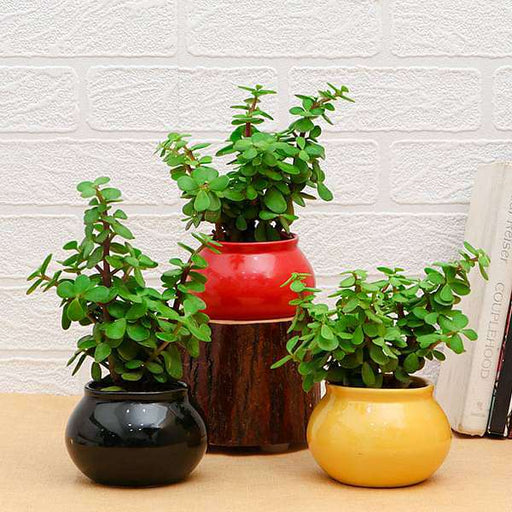Tulsi seed varieties
Holy moly, there's more than one! With three main types of Tulsi—Rama, Krishna, and Vana—these seeds offer a divine selection for any garden enthusiast. Prepare to be blessed!
Planting tulsi seeds
Sow it, and it shall grow! With a pinch of patience and a sprinkle of know-how, your tulsi seeds will transform into flourishing, fragrant plants perfect for your garden or home.
Tulsi seed germination
The sprout of something special. Give your tulsi seeds 10-14 days to germinate, and you'll be rewarded with tiny sprouts eager to grow into verdant, sacred plants.
Tulsi seedling care
Tend to these babies with love. Proper watering, ample sunlight, and a touch of tender loving care will ensure your tulsi seedlings grow into strong, healthy plants.
Growing tulsi from seeds
Holy basil, Batman! With the right conditions, your tulsi seeds will grow into aromatic, sacred plants perfect for teas, culinary delights, and spiritual practices.
Tulsi plant uses
A treasure trove of benefits. From teas to tinctures, and from culinary delights to spiritual practices, tulsi seeds grow into versatile plants with myriad uses and benefits.
Saving tulsi seeds
Secure your sacred supply. By collecting seeds from your favorite tulsi plants, you're ensuring a continuous supply of this revered herb for seasons to come.
Tulsi seed packets
The gift that keeps on giving. With a variety of seeds available in convenient packets, your garden, windowsill, or balcony will soon become a sacred tulsi haven.
Organic tulsi seeds
Purity matters. By choosing organic tulsi seeds, you're supporting sustainable agriculture and enjoying the highest quality plants, free from harmful chemicals.
Tulsi seeds for tea
Sip, sip, hooray! Turn your homegrown tulsi plants into a delicious, health-boosting tea that's perfect for relaxation and rejuvenation.
Tulsi seed propagation
Multiply the magic. Learn the ins and outs of propagating tulsi seeds, and you'll have a garden or home brimming with these sacred plants.
Tulsi seed sowing tips
Cultivate success. Follow expert advice for sowing tulsi seeds, and you'll be rewarded with a thriving garden that's the envy of the neighborhood.
Tulsi seed storage
Keep them fresh! Properly storing your tulsi seeds ensures they'll be ready to sow when the time is right, producing healthy and vibrant plants.
Tulsi seed suppliers
Trusted sources for sacred seeds. Reliable tulsi seed suppliers ensure you're getting the best seeds for your money, setting the stage for an extraordinary garden.
Tulsi seeds for health
A sprinkle of wellness. Incorporating tulsi seeds and plants into your daily routine may offer various health benefits, from stress relief to immune system support.
Tulsi seed harvest
Reap the rewards. Discover the best techniques for harvesting tulsi seeds, and enjoy the fruits of your labor with abundant plants for years to come.
Tulsi seed germination temperature
Warmth is key. Providing the ideal temperature for tulsi seed germination is crucial for success, so keep it cozy for those sprouts!
Tulsi seeds for Ayurveda
A sacred staple. As a central herb in Ayurvedic medicine, tulsi seeds grow into plants that offer a multitude of benefits for mind, body, and spirit.
Tulsi seeds for bees
Buzz-worthy blooms. By planting tulsi seeds, you're not only adding beauty and fragrance to your garden but also providing nectar for bees and other pollinators. Support our buzzing buddies while reaping the sacred rewards of tulsi.
Tulsi seed history
A journey through time. Unravel the fascinating history of tulsi seeds and discover how this revered herb has held a special place in the hearts and homes of people for centuries.


